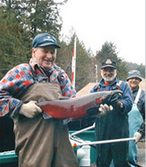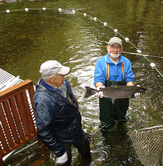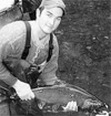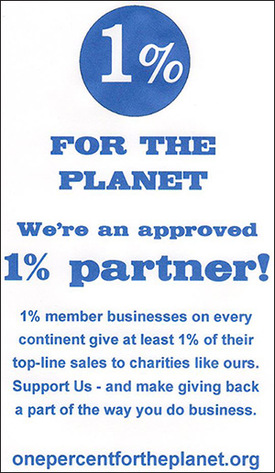A History of the Hatchery
|
Intro - Howard English started fishing and hunting the Goldstream area in the early twenties. He became a well known angler and naturalist. Mid to Late 60's - Howard became more and more aware of the declining Goldstream "COHO"! Was this due to the increasing extraction of water for drinking purposes, urban encroachment, highway construction, logging, or just plain over fishing? He started lobbying the federal fisheries to do something or at least let him and some volunteers try to enhance the run. The idea/request fell on deaf ears! 1971 - After a lot more lobbying, Howard finally got permission to operate one stream-side gravel incubation box and take sufficient brood stock to produce approximately 20,000 eggs. Although not expected, they had excellent egg to fry survival. 1973-76: The number of incubation boxes was increased with continuing good survival. 1977 - Fisheries finally realize the potential for public involvement and created the Salmon Enhancement Program (S.E.P.) which incorporates a Public Involvement Program (P.I.P.) run by four Community Advisors (C.A.s) who provide technical advice to volunteers and act as liaison with federal fisheries. 1981 - Funding secured to build a small hatchery building. The Greater Victoria Water District was and still is extremely supportive by providing the site, and a good supply of water. 1982 - Building constructed as an enhancement and education facility. 1983-88 - Enhancement techniques refined, but disappointingly, number of COHO still declining. 1989 - A large shed was built to house the "Captroughs". 1990 - Lowest return of COHO yet - 50. Unfortunately, after a fall Howard becomes ill. 1991 - Howard passes away. Decision made to form our present association. Rearing strategy for COHO was changed. Realizing that COHO suffer greatest losses while in fresh water, it was decided to hold the fry at the hatchery for a year until smolted. Our fish are now 18-22 grams when they are released instead of 11-12 grams for wild fish The undertaking is labor intensive and more costly as the fish are now spending 18 months at the hatchery. 1994 - The strategy seems to have WORKED. Approximately 3,000 spawners return. We were indeed fortunate to have been able to kick start the new program in 1991 - By securing some 200,000 eggs from Shawnigan Creek stock. This "donor stock" was genetically the same because earlier,Goldstream fry had been transferred to Shawnigan Creek. 1995-96 - Several covered 12' fiberglass, self cleaning, round rearing tanks were installed. 1997 - A brood stock collection and enumeration fence, and trap were built, on Goldstream River. 1998 - 6 more covered 12' fiberglass, self-cleaning, round brood stock and rearing tanks were added to the hatchery complex. |
Matthew's DreamCardin — who went to David Cameron, Spencer and Belmont schools before attending and graduating from the University of Victoria in 2002 — was killed on Dec. 3, 2003.
A consummate outdoorsman, Cardin died at age 27 near Port Renfrew, his home at the time, after a Douglas fir toppled in high winds and crushed his truck. He was thought to have been keeping an eye on fish habitat, and perhaps watching for poachers, following the illegal slaughter of two Roosevelt elk in the same area a week earlier. |




